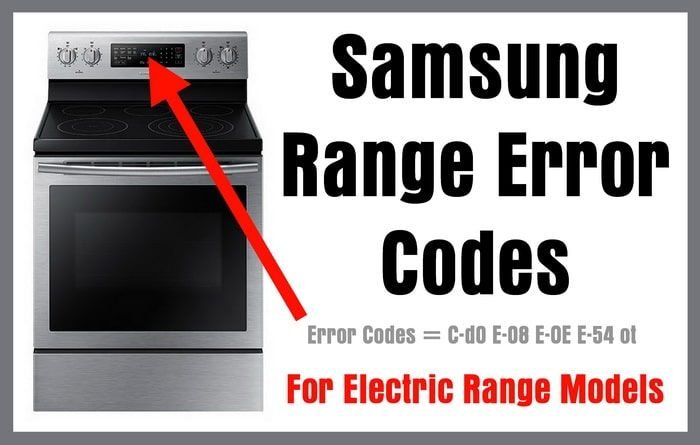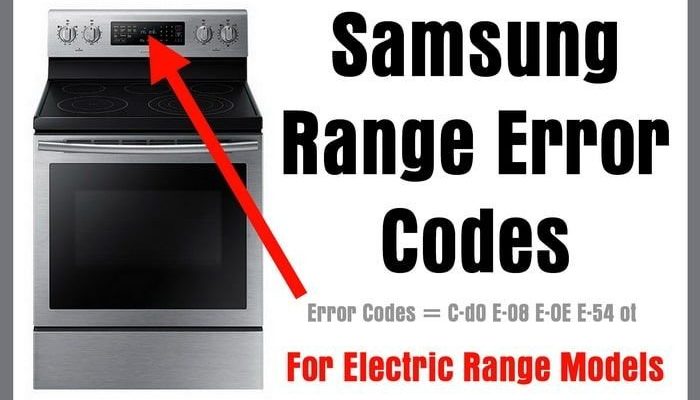
Error codes are essentially your appliance’s way of communicating that something isn’t quite right. It’s like your car’s dashboard lighting up to remind you to check the engine or fill up the gas tank. The “LE” error specifically relates to the oven’s safety functions, hinting at issues with the oven’s lock system. So, should this blinking code worry you? Let’s break it down into simple terms and see if your oven is still usable and, most importantly, safe.
Understanding the “LE” Error Code
The “LE” error code on a Samsung oven is not as cryptic as it seems. Essentially, “LE” stands for “Lock Error,” indicating there’s a problem with the lock mechanism that secures the oven door. Think of it like a safety catch on a lock that won’t engage properly. This lock is crucial because it ensures that the oven door stays securely closed when in use, thereby preventing accidents and ensuring proper cooking conditions.
This error could arise from various reasons. Mechanical obstruction is one common cause – imagine a tiny pebble stuck in a door hinge, preventing it from closing completely. Similarly, food residues or debris could affect the oven’s locking mechanism. Electronic glitches can also be culprits. Like when your smartphone suddenly freezes, sometimes the oven’s control system might simply need a reset.
If you’re facing the “LE” error, here’s the deal: it doesn’t necessarily mean your oven is in immediate danger, but it does need attention. Ignoring it might lead to further complications, like uneven cooking or, worse, damage to the oven itself. So, what should you do next? Let’s delve into possible solutions.
How to Safely Address the “LE” Error Code
First and foremost, ensuring the safety and functionality of your oven is crucial. Start by turning off the oven and unplugging it. Safety comes first, right? This step is like rebooting your computer when it acts up; it gives the system a chance to reset. After waiting a few minutes, plug the oven back in and see if the error clears.
If the error persists, check the locking mechanism for visible obstructions. Treat it like you’d clean out a jammed drawer: open the door and inspect the hinges and seals for any stuck debris or food particles. A soft brush or damp cloth can often clear these obstructions easily.
Still no luck? The fault might lie in the electronic control system. Here’s where a professional can help diagnose and fix underlying issues without causing further damage. Attempting complex repairs without expertise is like trying to fix a leaking faucet without the right tools — it might end in disaster. Therefore, if the simpler fixes don’t work, calling a certified technician is the best course of action.
Preventative Measures and Final Thoughts
To keep the “LE” error at bay, regular maintenance is key. Much like how you wouldn’t drive a car indefinitely without an oil change, your oven needs some TLC. Regularly cleaning the door seals and the locking mechanism reduces the likelihood of debris buildup, which is a common culprit for this error.
In addition, ensure the oven is installed correctly. Uneven surfaces can lead to alignment issues with the door, much like a crooked picture frame that just doesn’t sit right. Keeping your oven’s surfaces level can prevent mechanical stress on the door lock, reducing the chances of encountering the “LE” error.
In conclusion, while the “LE” error can be concerning, understanding its cause and tackling it head-on with simple troubleshooting steps can often resolve the issue without panic. And remember, keeping your oven well-maintained can prevent many common problems. If all else fails, reaching out to Samsung’s customer service or a trusted technician ensures you’re in safe hands. So, the next time your dinner plans get interrupted by a flashing “LE”, you’ll know exactly what to do!
